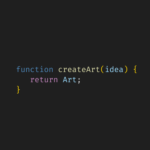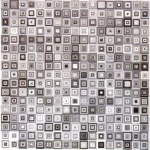The Beauty of Mathematics
Mathematics is often seen as rigid, functional, and abstract—a tool for calculation rather than creation. But beneath its formulas and sequences lies something deeper: an inherent beauty, a natural rhythm, a language that shapes the world around us. We use mathematics as both a foundation and a brushstroke, a structure and an aesthetic.
Numbers That Shape Beauty
Our work is often built on sequences and ratios that occur not just in equations but in nature, music, and art. These mathematical principles guide our creations, ensuring that each piece is not just visually compelling but deeply structured and intentional.
- The Fibonacci & Lucas Sequences – Found in the spirals of shells, galaxies, and flower petals, these number sequences create a natural balance and flow within our compositions.
- The Golden Ratio – A proportion that has shaped everything from Renaissance paintings to modern design, offering a sense of harmony that feels instinctively right.
- Triangular Numbers – A sequence that defines how objects can be arranged symmetrically, forming patterns that feel ordered yet dynamic.

Art as a System
We build, encode, and govern our work with mathematical rules. Rather than restricting creativity, these rules give rise to something deeper—an emergent beauty that is both structured and organic.
Mathematical principles do not restrict creativity; they enable complexity to emerge in ways the human mind alone might not conceive. In the same way that a simple equation can generate infinite fractals, a well-designed system can produce artworks with deep meaning, balance, and uniqueness.
Mathematical Masters
Many artists throughout history have used mathematics as a foundation for their work, blending logic with aesthetics to create visually compelling compositions.

Leonardo da Vinci (1452–1519)
Leonardo da Vinci’s Vitruvian Man is a perfect embodiment of the Golden Ratio (Φ = 1.618), illustrating how the human body’s proportions align with this mathematical constant—demonstrating a harmonious balance between art, science, and nature.

Piet Mondrian (1872–1944)
Piet Mondrian used mathematical precision and geometric abstraction in his art, structuring compositions with grids of vertical and horizontal lines based on proportional relationships, creating balance and harmony through carefully calculated spacing and alignment.

Bridget Riley (b. 1931)
Bridget Riley uses mathematical precision and optical geometry to create mesmerizing patterns that manipulate perception, employing calculated repetitions of shapes and colors to generate rhythmic visual effects that seem to move and shift before the viewer’s eyes.
Mathematics is more than numbers—it is the hidden rhythm of the universe, the foundation of beauty, and the language through which we create. We harness this language to build art that is structured yet organic, precise yet expressive, rare yet deeply connected—proving that in every equation, every sequence, and every system, there is art waiting to be discovered.
Modus


